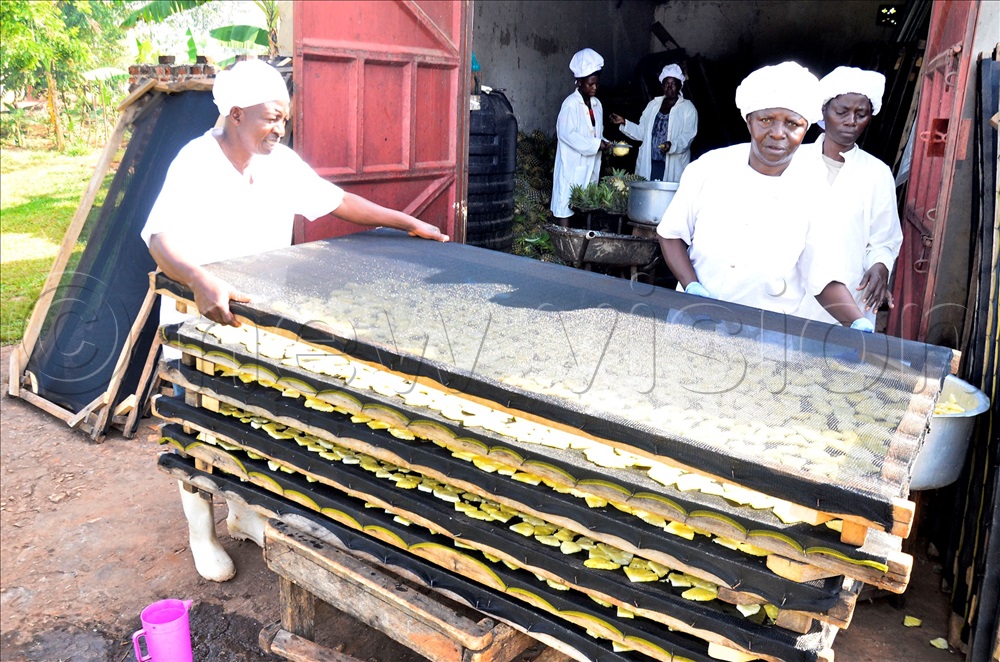Pineapple farming is one of the most profitable agribusiness ventures in Uganda. However, many farmers still sell their produce raw, missing out on the opportunity to earn more through value addition.
Adding value to pineapples not only increases shelf life but also opens up new markets, both locally and internationally.
With proper processing techniques, farmers can turn fresh pineapples into dried fruit, juice, jam, vinegar, wine, and even pineapple powder, fetching higher prices.
Jane Naluwayiro, a successful commercial pineapple farmer from Ndeeba village in Kayunga district, understands this well.
She owns Patience Pays Initiative, a company that not only trains farmers in pineapple value addition but also supplies dried pineapples to different organisations.
Through her business, Naluwayiro has helped many farmers transform their farming practices by embracing value addition.
Her husband, Charles Naluwayiro, is also an expert in pineapple processing and part of the Patience Pays Initiative team.
Together, they have mastered the art of drying pineapples to create high-quality, export-standard dried pineapple chips.
According to Charles, drying pineapples is a simple yet highly profitable method that ensures farmers do not suffer losses due to market fluctuations or spoilage.
How to dry pineapples into chips
Drying pineapples into chips is one of the best ways to preserve them while creating a marketable product.
Charles explains the process in simple steps.
Selection of quality pineapples, choose fully ripe, fresh pineapples. Avoid overripe or damaged fruits as they may not yield the best results.
Washing and peeling, thoroughly wash the pineapples to remove dirt and any pesticide residues. Peel the outer skin carefully using a sharp knife.
Slicing, cut the pineapples into thin, uniform slices (about 5mm thick). Uniform slices help in even drying and better presentation.
Drying process
Use a solar dryer or an electric food dehydrator for the best results.
If using a solar dryer, spread the slices on clean drying trays, ensuring they do not overlap.
Drying can take between 8 to 24 hours depending on the weather conditions and the type of dryer used.
If using an electric dryer, set the temperature to around 50-60°C and monitor the process to prevent over-drying.

Checking for dryness, the dried pineapple chips should be slightly chewy but not sticky or moist. Properly dried pineapples can last up to six months when stored in airtight packaging.
Packaging
Pack dried pineapples in airtight plastic bags or vacuum-sealed pouches to maintain freshness.
Label packages with details such as the product name, ingredients (if any), production date, and expiry date.
Marketing and selling
Dried pineapples are highly demanded in supermarkets, hotels, schools, and health food stores.
Farmers can also explore export markets, as dried fruits have a higher value abroad.
Why dried pineapples are a profitable venture
According to Jane, drying pineapples has several benefits
Longer shelf life, fresh pineapples spoil within days, while dried pineapples can last several months.
Higher market price, a well-packaged 100g pack of dried pineapples sells for up to sh5,000, whereas a whole fresh pineapple may sell for just sh1,000 to sh2,000.
Reduced losses, farmers avoid post-harvest losses, especially during peak seasons when prices drop.
Increased market reach, dried pineapples can be exported easily, increasing income potential.
Health benefits, consumers prefer dried pineapples as a natural, healthy snack with no preservatives.
Other ways to add value to pineapples
Besides drying, farmers can explore these additional value addition techniques.
Pineapple juice, extracting juice and bottling it for sale in local markets.
Pineapple jam, making jam by cooking pineapples with sugar and pectin.
Pineapple wine and vinegar, fermenting pineapple juice to create unique beverages.
Pineapple powder, grinding dried pineapples into powder for use in baking and smoothies.





